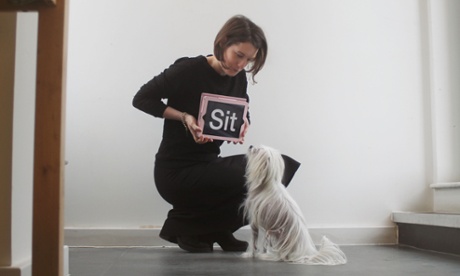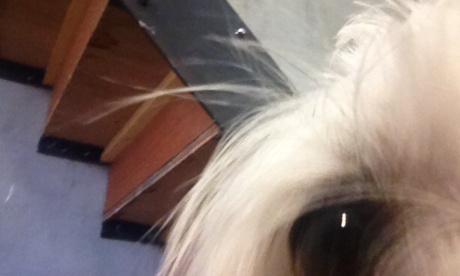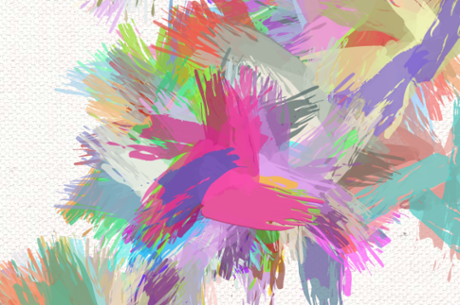
It was inevitable, really, given the irrepressible rise of the selfie: the day has finally come when we can attempt to teach our canine friends to capture images of themselves.
All the same, I am a little taken aback to find myself smearing my iPad screen with peanut butter and waving it under my pup’s nose.
I am at an iPad class billed as “higher education for your dog”, run by the pioneer of dog-selfie training, New Yorker Anna Jane Grossman. She has teamed up with her childhood friend Nicole Scott, founder of City Dog, and Londoners now have the opportunity to attend one of their iDog clinics.
“These courses are about having fun together, developing the bond between you and your dog, and refining your training skills. Plus you will walk away with a cool party trick,” promises Scott, while Grossman is quick to point out that we are not here to teach our dogs to do useful things, such as online banking.
Refine your training skills
City Dog has its own bespoke app in development, which will launch in early May, but in the meantime, Grossman and Scott use a variety of apps, including Big Camera Button, which turns the entire screen of a tablet or smartphone into a shutter button. The camera is constrained to close-focus and is able to take pictures in quick succession, increasing the dog’s chances of capturing itself at a flattering angle.
My dog and I don’t get off to a brilliant start. Olive is a sensitive Chinese crested-mix who can’t cope with the sound of the clicker - the training device used to pinpoint and reward the exact moment the dog does something that the trainer wants to encourage. She modestly turns her face away from the iPad, desperate for a place to hide.
When I clock the carefree shiba inu next to us, who has already progressed to creating her own artworks on a specially designed painting app, I begin to question whether my dog is quite as bright as I have always liked to believe.
‘A dog is like a little robot’
But under Scott’s gentle guidance, we build Olive’s confidence, teaching her first to touch my hand with her nose, moving to a wooden dummy iPhone, and finally, the iPad screen. Before long, she has captured dozens of selfies. Most of them are fairly abstract, but I’m delighted.

At one point she gets her tricks mixed up and does a high-five on the screen. The result is a nice shot, but maverick acts of spontaneity such as these are not to be encouraged. “We want our dogs to nose the iPad on cue,” explains Grossman firmly, “because if you can master that, the better she’ll be at understanding you when you need to teach important stuff.”
Social engagement aside, what lies at the heart of the iPad training is motor development. Scott points out that Olive is aiming for exactly the same spot on the screen every time, and what may appear to be random nose swipes are in fact fairly precise. “It’s conditioning,” she says. “Dogs learn in pictures. Inside your dog’s brain is a very simple algorithm – pleasant images in one place and unpleasant images in another. A dog is like a little robot, and every time we say ‘yes!’ she takes a picture of whatever is visually in front of her and files it in her ‘pleasant’ queue.
“Later, we can train her to differentiate between images, such as words on a screen, for example. We can even get her to answer a question by training her to tap a ‘yes’ or ‘no’ button.”
It all sounds a little too sophisticated for poor Olive, but my reservations are swept aside when Grossman, in a matter of mere minutes, teaches her to recognise – and respond correctly to – written commands, using the app Big Words.
Trying it for myself, I hold up the iPad with the word “sit” in large white letters against a black screen. Olive immediately sits. Next I show her “whirly” and she twirls around, enthusiastically rewarding me with what is, helpfully, her favourite trick. I return the word “sit” to the screen, and she obliges. I am amazed. We agree she’s clearly more of an intellectual than an artist. “You’ll have her reading Dostoevsky soon,” says Grossman.
What dogs really want
Cats have long dominated the pet app market. Game for Cats, for example, which encourages them to chase after laser dots, has been downloaded more than 1m times. But never mind the popularity of cat apps – you’d never get a cat to recognise a word and respond to it.

At first glance, it all seems like a bit of silly fun, but key to City Dog’s methods is something genuinely essential to dog ownership: nurturing through play the deep two-way bond between animal and human.
“So many of our clients love to spoil their dogs with material stuff, but their dogs don’t care about all that. What they really want is mental stimulation. They want to play,” Grossman says. “We’re teaching owners how to get engagement from their dogs, which is the foundation for all dog training.
“I think people are starting to see dog selfies less as a novelty and more as something that actually can be a step toward developing other kinds of training skills.”
As the lesson draws to a close, Olive has taken 146 selfies. I think I may have created a monster.
• How to disable or control in-app purchase on iPads and on Android tablets
